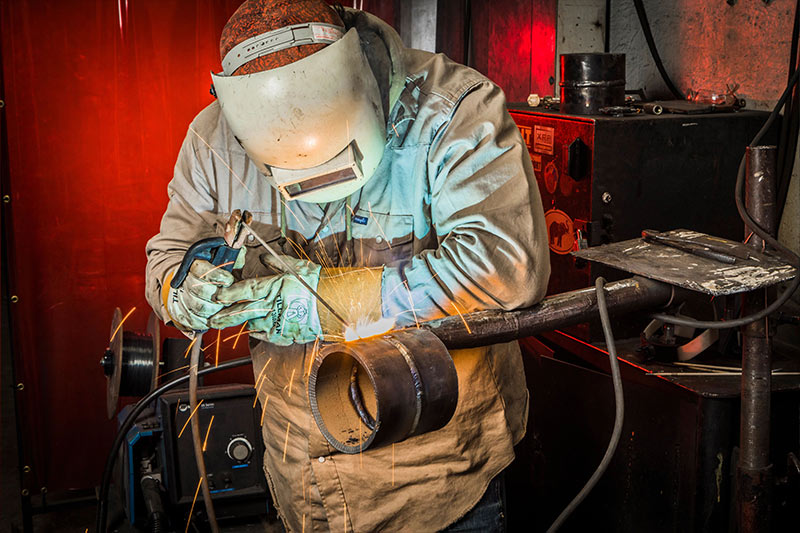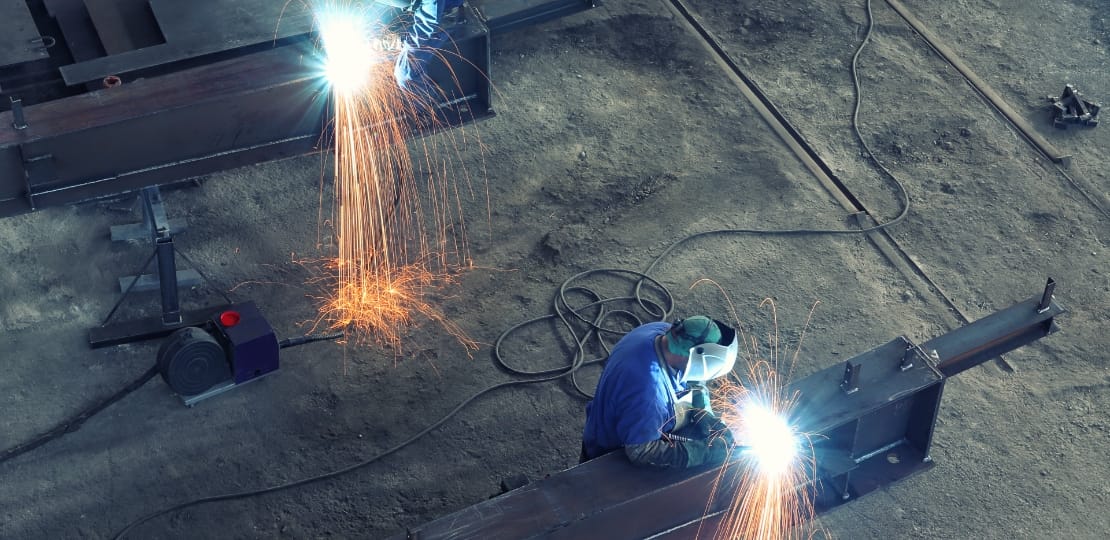Top advice from Belgrade Welding professionals
Wiki Article
Common Welding Fixing Issues and Just How to Address Them Properly
Welding repair work often run into a variety of issues that can jeopardize the honesty of the end product. Common problems consist of insufficient infiltration, porosity, and imbalance, to name a few. Each defect presents distinct obstacles that need particular strategies for resolution. Recognizing these problems is necessary for welders aiming to enhance their skills and outcomes. This discussion will certainly check out these typical welding repair issues and effective techniques to resolve them.Poor Penetration
Insufficient penetration occurs when the weld steel stops working to totally fuse with the base product, causing weak joints and potential architectural failings. This problem usually comes from inadequate warm input, wrong electrode angle, or improper welding rate. Welders may experience poor infiltration due to a miscalculation of the required specifications for a details material thickness or type. Additionally, contamination on the base material's surface can impede reliable bonding, worsening the trouble. To address insufficient penetration, welders should guarantee proper settings on their devices and keep a tidy work surface. Regular evaluation of welds is recommended to recognize any shortages early, enabling timely adjustments and the avoidance of compromised architectural stability in bonded settings up.Porosity
Porosity is a typical flaw in welded joints that materializes as little gas bubbles trapped within the weld metal. This flaw can jeopardize the stability of the weld, resulting in lowered stamina and prospective failure under stress and anxiety. Montana Mobile Welding and Repair Fabrication. Porosity generally occurs from contamination, wetness, or inappropriate welding methods, which enable gases to run away into the liquified weld swimming pool. To resolve porosity, welders ought to ensure proper surface area preparation, preserve a tidy workplace, and make use of ideal welding parameters. Furthermore, selecting the appropriate filler product and shielding gas can reduce gas entrapment. Routine inspection and testing of welds can help identify porosity early, ensuring prompt restorative activities are taken, thus maintaining the high quality and dependability of the bonded structureImbalance
Misalignment in welding can develop from various elements, including incorrect arrangement and thermal expansion. Understanding the origin is necessary for reliable resolution. Numerous adjustment methods are available to straighten elements and guarantee structural honesty.Sources of Misalignment
Welding misalignment frequently originates from a selection of underlying concerns that can jeopardize structural integrity. One primary cause is inappropriate fit-up of components before welding, which can lead to gaps and unequal surfaces. Variants in thermal development throughout the welding process can additionally lead to distortion, particularly if the products being signed up with have different coefficients of development. Additionally, poor clamping and fixturing may stop working to hold parts firmly in location, causing activity throughout welding. Improperly maintained equipment, consisting of welding makers and tools, might introduce incongruities in the weld bead, further adding to misalignment. Ultimately, operator mistake, coming from insufficient training or experience, can additionally play a substantial duty in producing misaligned welds.Improvement Methods Offered
Resolving imbalance effectively needs a mix of corrective methods tailored to the specific issues handy. One typical approach is making use of components or jigs to hold elements in the right setting during welding, making sure regular positioning. Additionally, pre-heating the materials can aid lower distortion and enhance fit-up. For substantial imbalance, mechanical adjustment techniques, such as making use of hydraulic jacks or clamps, can be used to remedy the setting before welding. Post-weld warm treatment may also be required to soothe stress and anxieties caused by misalignment. Mindful examination and change throughout the setup stage can stop misalignment concerns from coming to be substantial issues, advertising a smoother welding process and boosting general architectural honesty.Distortion
Distortion is a typical challenge in welding that can arise from different variables, including uneven heating & cooling. Recognizing the sources of distortion is vital for implementing reliable avoidance strategies. Addressing this problem not just enhances structural stability yet additionally boosts the overall high quality of the weld.Root causes of Distortion
When subjected to the intense warmth of welding, products commonly undergo adjustments that can bring about distortion. This sensation largely arises from thermal growth and contraction during the welding process. As the weld area warms up, the material broadens; upon air conditioning, it acquires, which can develop inner stress and anxieties. On top of that, irregular heating throughout a workpiece can worsen these anxieties, causing warping or bending. The sort of material also plays a considerable duty; steels with differing thermal conductivity and coefficients of expansion might react differently, causing unforeseeable distortions. Inadequate joint layout and inadequate fixturing can contribute to imbalance throughout welding, raising the chance of distortion. Recognizing these causes is necessary for effective welding fixing and prevention techniques.Avoidance Techniques
Efficient prevention strategies for distortion during welding focus on managing warm input and making sure appropriate joint layout. Maintaining a regular heat input aids to lessen thermal development and tightening, which can result in distortion. Using Check Out Your URL techniques such as pre-heating the work surface can likewise lower the temperature level slope, promoting uniform home heating. In addition, selecting suitable joint styles, such as T-joints or lap joints, can boost security and minimize anxiety focus. Carrying out appropriate fixturing to protect the work surfaces in position additionally help in preserving positioning during the welding procedure. Staggered welding sequences can disperse heat more equally, preventing local distortion. By applying these techniques, welders can significantly decrease the possibility of distortion and enhance the total high quality of their welds.Cracking
Breaking is an usual issue come across in welding repair work, usually resulting from different elements such as incorrect cooling prices, material choice, or insufficient joint preparation. The incident of fractures can significantly compromise the stability of the weld, causing potential failings during operation. To resolve this issue, welders have to initially analyze the root triggers, making certain that products work and properly picked for the specific application. Furthermore, controlling the air conditioning price during the welding process is necessary; fast air conditioning can induce tension and lead to cracking. Correct joint design and prep work also add to decreasing the danger. Implementing these techniques can boost weld high quality and durability, eventually minimizing the likelihood of splitting in ended up weldments.
Incomplete Combination
A significant concern in welding repairs is incomplete fusion, which occurs when the weld metal does not appropriately bond with the base material or previous weld passes - Montana Mobile Welding and Repair Welding. This problem can cause weaknesses in the joint, possibly compromising the integrity of the welded framework. Aspects adding to insufficient combination consist of not enough warm input, incorrect welding method, and contamination of the surfaces being joined. To resolve this concern effectively, welders should ensure proper pre-weld cleaning and surface area prep work, along with change their welding criteria to blog here accomplish ample infiltration and blend. Normal evaluation throughout the welding procedure can also assist determine insufficient combination early, allowing for timely rehabilitative actions to boost the total top quality of the weldOverheating
While welding repair services can boost structural stability, overheating provides a considerable difficulty that can result in product deterioration. Excessive warm during welding can modify the mechanical homes of steels, leading to lowered toughness, increased brittleness, and bending. This sensation is particularly vital in high-stress applications where structural integrity is critical. Determining getting too hot can include aesthetic evaluations for discoloration or distortion, as well as keeping track of temperature during the welding procedure. To alleviate the threats related to getting too hot, welders need to use suitable methods, such as controlling warmth input, adjusting traveling rate, and using ideal filler materials. Additionally, applying pre- and post-weld warmth treatments can assist restore material homes and improve the overall top quality of the repair, making certain lasting efficiency and safety and security.Often Asked Questions
What Are the Usual Indications of a Welding Problem?

Exactly How Can I Test My Welds for High quality?
To examine welds for top quality, one can make use of aesthetic inspections, ultrasonic screening, and radiographic methods. Each strategy guarantees structural stability, determines problems, and confirms adherence to specified requirements, inevitably improving the reliability of the bonded joints.What Safety Safety Measures Should I Take While Welding?
When welding, one need to prioritize security by wearing ideal individual protective tools, ensuring correct ventilation, safeguarding flammable products away, maintaining a clean workspace, and knowing environments to avoid injuries and accidents.Can I Repair a Weld Without Renovating the Entire Joint?
Fixing a weld without redoing the whole joint is feasible, depending on the damages (Montana Mobile Welding and Repair Belgrade Fabrication). Techniques such as grinding, including filler product, or utilizing a welding procedure can properly attend to certain problems while maintaining the surrounding frameworkWhat Equipment Are Vital for Efficient Welding Repairs?
Important devices for efficient welding repairs consist of a welding machine, cord brush, grinder, safety gear, clamps, and filler products. Each device plays a crucial duty in guaranteeing top quality and security throughout the repair service process. Porosity generally emerges from contamination, dampness, or inappropriate welding methods, which allow gases to get away right into the liquified weld pool. Poorly conserved tools, including welding makers and devices, might introduce variances in the weld bead, additional adding to imbalance. When subjected to the extreme warmth of welding, products usually go through adjustments that can lead to distortion. Splitting is a typical problem come across in welding repairs, commonly resulting from numerous variables such as incorrect air conditioning prices, material browse this site selection, or inadequate joint preparation. A substantial problem in welding repair work is insufficient blend, which occurs when the weld steel does not effectively bond with the base material or previous weld passes.Report this wiki page